Three weeks ago at RightsCon Costa Rica, the Open Knowledge team ran an informal consultation session in the process of rethinking and updating the Open Definition for today’s challenges and contexts.
The Open Definition was a groundbreaking process led by the Open Knowledge Foundation more than a decade ago that created a consensus among experts by defining openness in relation to data and content and influenced every institution entering the digital age with an open and collaborative approach, adding meaning to good intentions. As our CEO Renata Ávila articulates in more detail, the macro objective of this project is to create a bridge between old definitions and new discourses to keep the open ecosystem alive and current, instead of just an empty word.
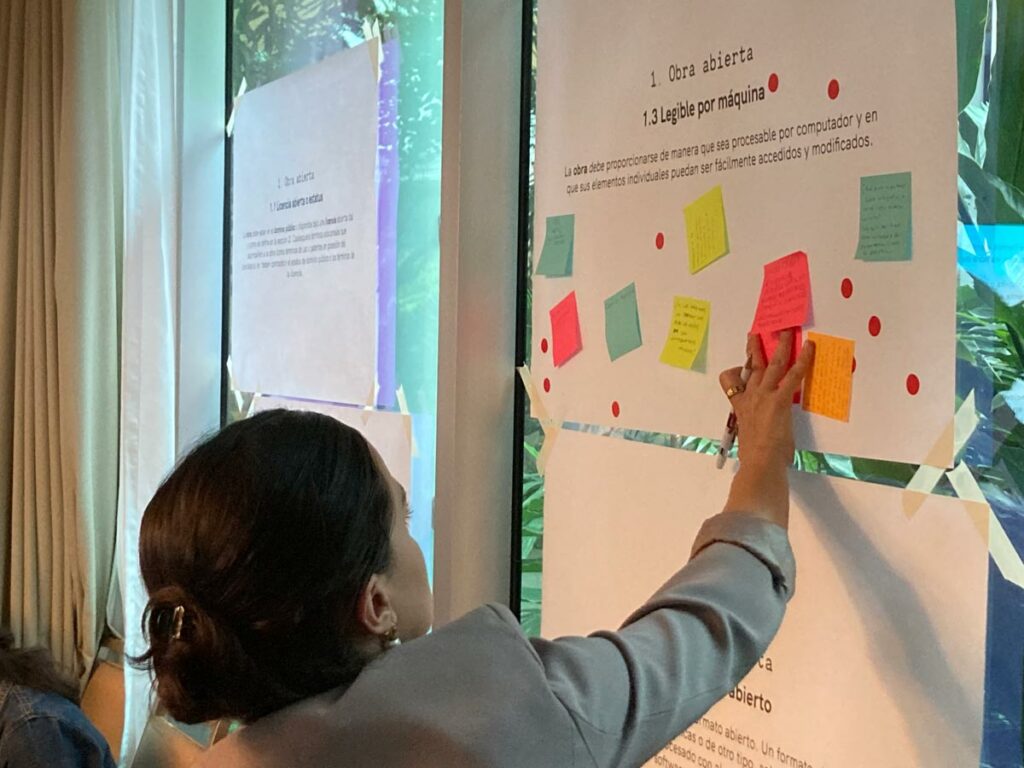

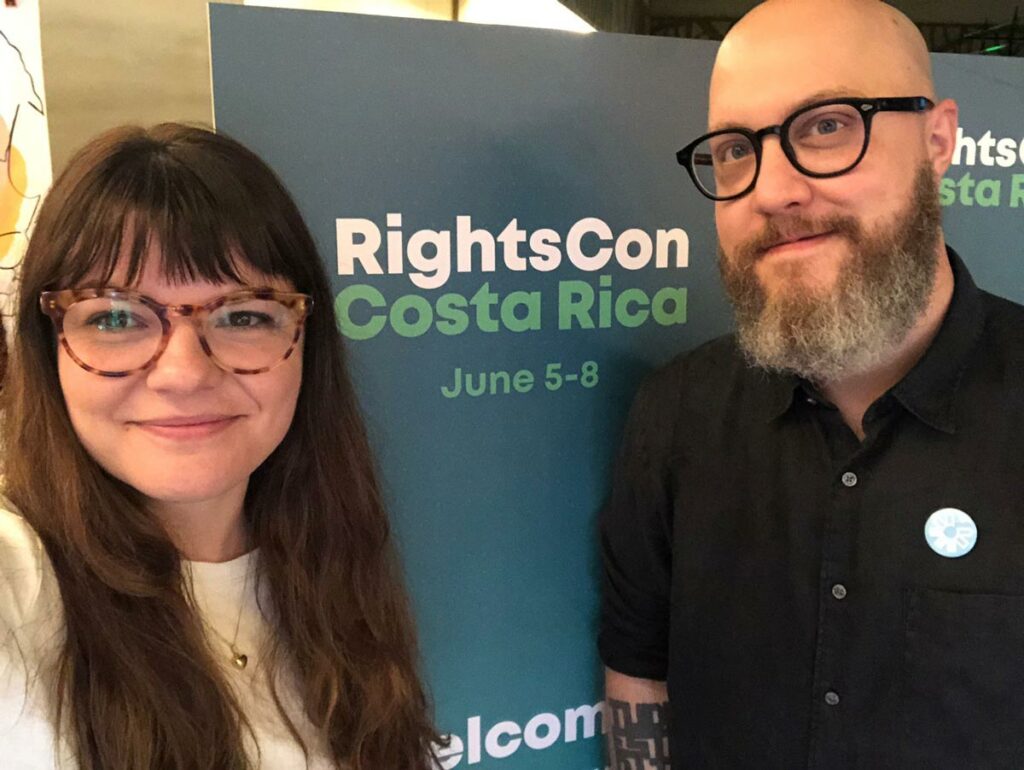
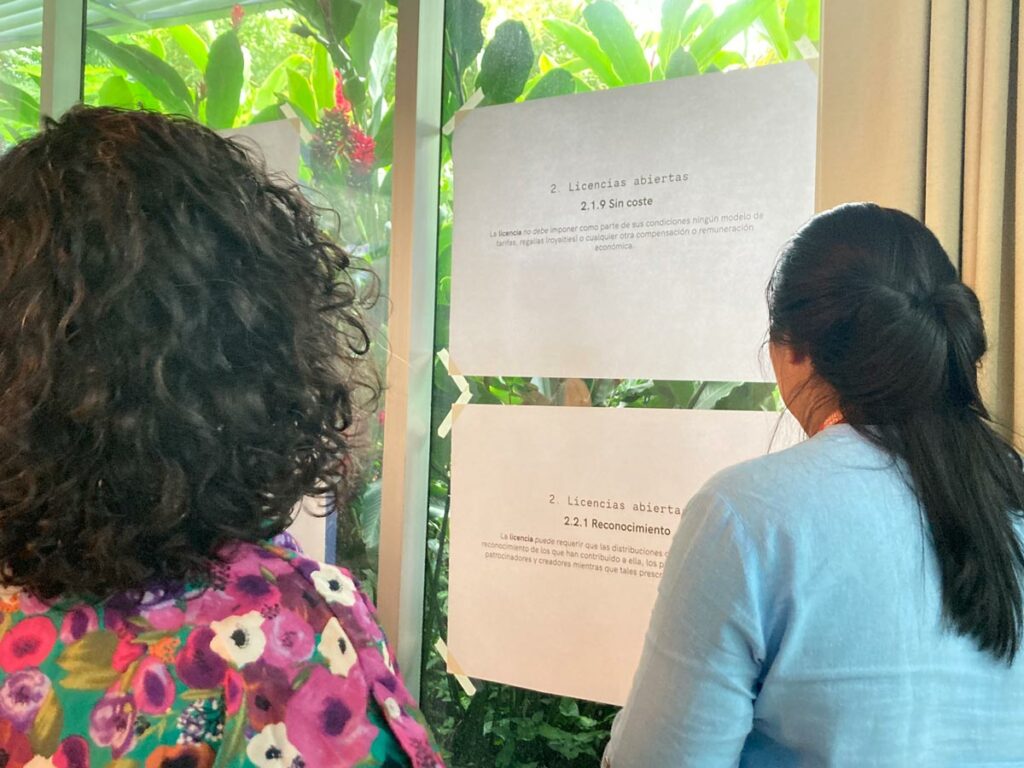
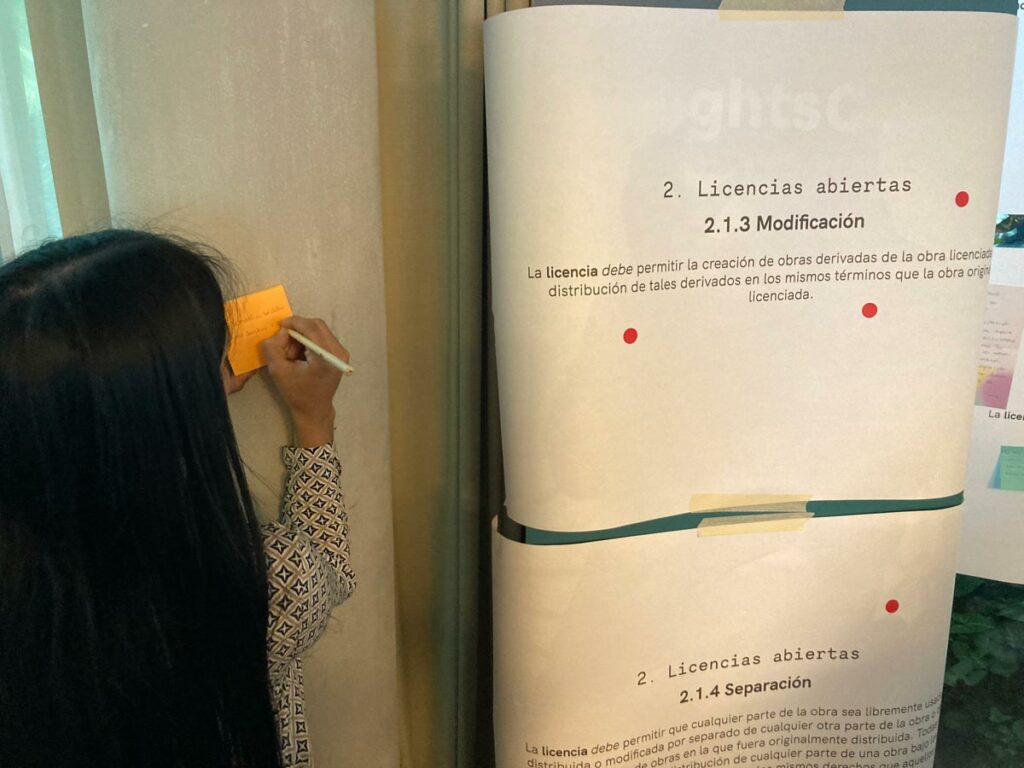
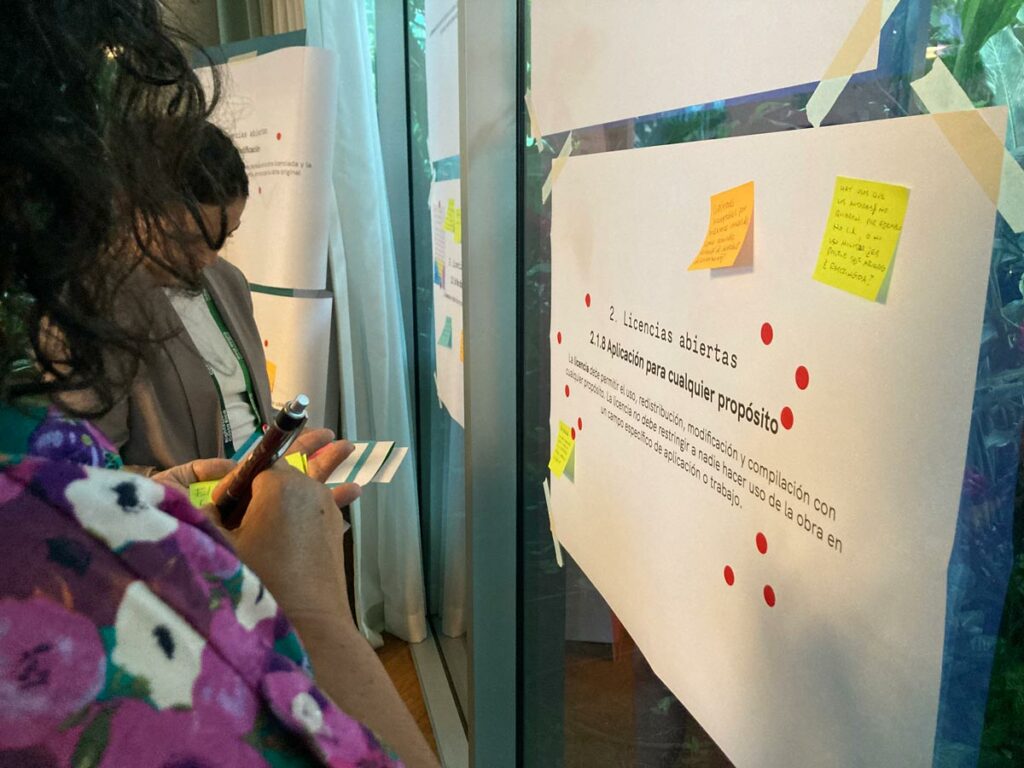
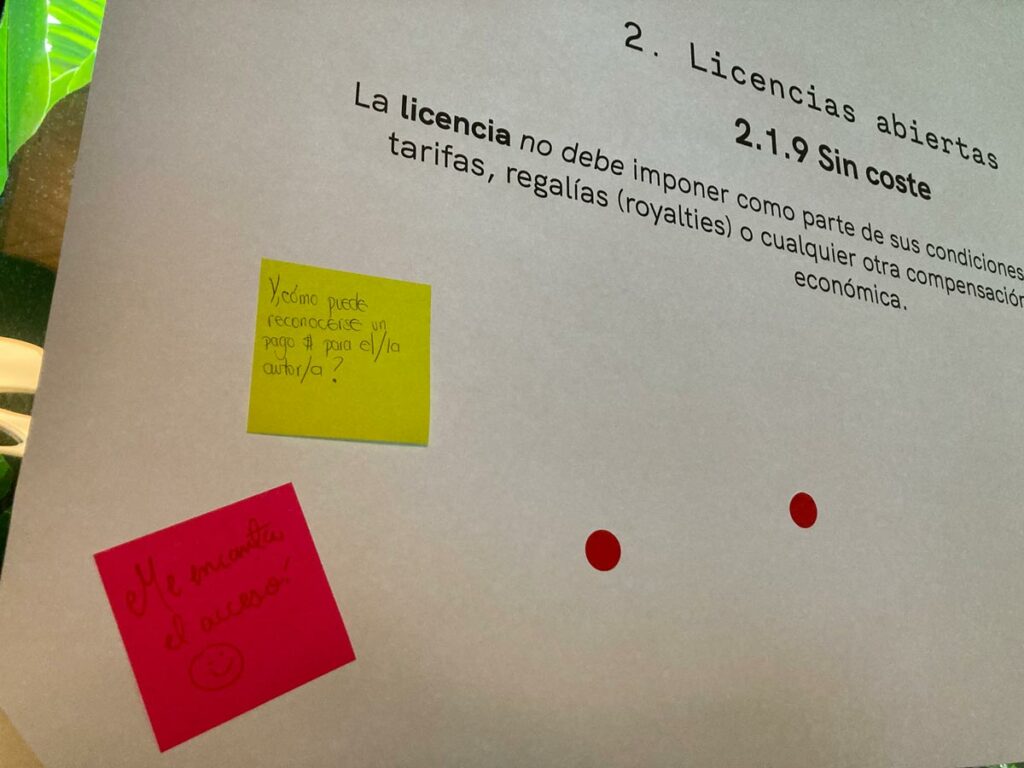

Session Design
The session was titled “Towards a more diverse and inclusive Open Definition” and was conducted in Spanish, both as a way to leverage the presence of Central and South American communities at RightsCon and also as an active exercise in inclusion and diversity. The aim of the workshop was to “open up the open definition”, taking participants to think about specific points and understand which parts of the definition generate the most interest today, in the sense that they should be changed, eliminated or simply discussed in more depth. This session, therefore, sought a greater level of detail compared to the first iteration of the project, which took place in March at MozFest.
Do Big Good helped us design the session. Together with their team, we made an effort to make the best out of our presence in a physical room, which rarely happens nowadays. We hung 20 A1-size sheets along the walls of Sala Limón at the National Convention Center of Costa Rica, each sheet containing an article from the current Open Definition v 2.1. We then proposed three activities:
- Approach – At first, each participant was given 4 red round stickers. After walking around the room and becoming more familiar with the Open Definition, they should stick the stickers in the points that, in their opinion, should receive more attention.
- Elaboration – Once the “hot spots” were identified and the trends quickly discussed as a group, we distributed several sticky notes, notepads, pens and markers. Each participant could now better elaborate on their comments, annoyances and suggestions, and then post their observations in the respective articles on the wall.
- Discussion – By the end of the second round, it was already possible to identify clear trends and, with the comments, understand the reasons behind the interest in each article. It was time for group discussion, in which each participant was able to elaborate on their perspectives, comment on other people’s comments, agree, disagree, and jointly understand the practical magnitude of this challenge.
Session Documentation
Below, we did the exercise of visually compiling the quantitative data into a graph. According to the participants, the following articles should receive more attention during the review process:

Here are some of the most significant comments written by the participants.
2.1.6 NON-DISCRIMINATION
The license must not discriminate against any person or group.
What is meant by non-discrimination? Many times the exclusion is systematic, which implies that the accessibility barrier is set by the system itself. For example, not all communities have access to the Internet, even less to technology, so non-discrimination should consider this barrier in the same way.
2.1.8 APPLICATION TO ANY PURPOSE
The license must allow use, redistribution, modification, and compilation for any purpose. The license must not restrict anyone from making use of the work in a specific field of endeavor.
Issues unacceptable by universal maxims, such as genocide, violation of rights, discrimination.
There are uses that the authors do not want. For example no AI, no military use, is it possible to be open and restricted?
The purpose of the licence cannot be to restrict or penalize. Unethical uses must be resolved in the field of regulations.
2.2.2 INTEGRITY
The license may require that modified versions of a licensed work carry a different name or version number from the original work or otherwise indicate what changes have been made.
I think it is important that the licensed work bears the name and indicates the changes made. This will help strengthen the initial work.
Are the definitions and principles part of an open, accessible and “living” document?
2.2.5 SOURCE
The license may require that anyone distributing the work provide recipients with access to the preferred form for making modifications.
What if the modification is used for evil?
1.3 MACHINE READABILITY
The work must be provided in a form readily processable by a computer and where the individual elements of the work can be easily accessed and modified.
The term “computer” should be expanded (apps, for example).
You can check the full session documentation and read all the comments – in Spanish – here.
Key Takeaways
In addition to the comments on each article, we have compiled the more general feedback about the Open Definition review that we received during the session.
- Inclusive Language – Leave behind legal jargon (or make an effort to translate it into simpler and more inclusive words that could be understood by everyone everywhere).
- Broader Agreement – The consensus around the Open Definition should be broader, even if the definition itself doesn’t change that much.
- Ethics / Use Purpose – There’s a tension between protecting the commons without restricting them. Participants really stressed the meaning of “application to any purpose”
- AI – There’s a big concern with artificial intelligence and machine learning systems. While machine readability needs to be guaranteed, there is also a need to better define what is meant by “computer”, and if there are cases in which this requirement might not be valid.
- Clarification – Deepen the focus on attribution, remuneration, and non-discrimination, assessing each word’s meaning for the actual times, diverse cultures and languages.
Next Steps
You can stay informed about the next steps by subscribing to the Open Knowledge Newsletter, and following the hashtag #OpenDefinition and @OKFN on Twitter, Mastodon, and LinkedIn. You are also invited to join and contribute to the official Open Definition discussion forum.
We’d like to thank AccessNow’s partnership through RightsCon for giving us shelter and visibility and also acknowledge the important contributions of all participants.
Thank you everyone and stay tuned for the next steps!









1 thought on “Debriefing the Open Definition workshop at RightsCon”
Comments are closed.